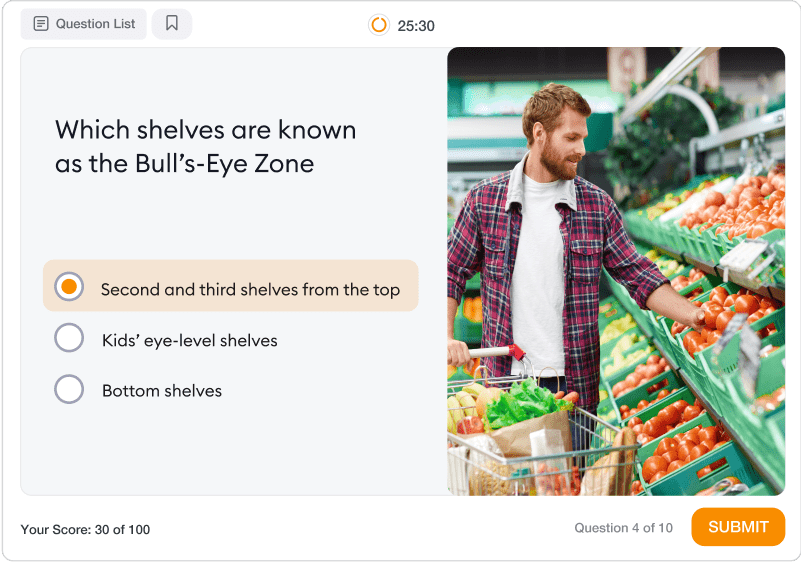Middlesex University: “In the 20/21 academic year, we recorded over 12,000 views for our iSpring quizzes”

A team of subject liaison librarians from Middlesex University has been using iSpring’s interactive quizzes for the last couple of years in order to train their students and fellow librarians on how to use their library resources.
Some of the team have kindly taken some time to share how iSpring helps them to engage their learners, check their understanding of the training material, and reinforce knowledge.

The Background: Library Training at Middlesex University
Middlesex University is a large and diverse university based in North London (UK), with three overseas campuses and a range of online learners.
As part of the Library and Student Support (LSS) service, our team of subject liaison librarians provides regular training on using library resources. Our goal is to equip students with the skills and knowledge needed to use both physical and digital library resources in order to be effective in their studies.
These days, students can go through their entire school career never using a library. As a result, alongside students who are very well informed, we find ourselves supporting some students with very low expectations of the library and a limited perception of what we have to offer.


The Challenge: Creating Engaging Learning Experiences in a Virtual Learning Environment
There has been a change in the librarian team’s collective approach to teaching over the past few years: from didactic training to activity- and games-based learning. We use this approach to engage students and to activate their prior knowledge.
For that reason, even before the pandemic and remote learning, we started looking at ways to provide interactive online training tools that would allow the students to reinforce knowledge and test their skills independently.
For example, in our classroom teaching, we have been using different activities, like card games, to break up learning sessions. We wanted to replicate such activities in our online learning environment.
The Solution: iSpring QuizMaker
iSpring QuizMaker enabled us to recreate classroom learning experiences online, and make remote learning during the pandemic effective and engaging for the students.
At first, we purchased just two licenses of iSpring QuizMaker to test-drive the tool, but later upgraded to 25 licenses to enable everybody in the Librarian and Academic Writing Support Team to create their own learning materials, as well as reuse quizzes created by colleagues.
Here are several benefits iSpring provided that powered our decision to equip our entire team with the software:
Easy-to-use PowerPoint-based interface
What really sold us on iSpring was the fact that it is so easy to use. As a group of librarians, we want to make things attractive and interesting, but we don’t want complicated tools because we’re not IT experts. With iSpring QuizMaker, anyone on the team can work out how to use it by themselves.
Even if things get tricky with the tool, I can always go to iSpring Help Pages and find an answer to my question. iSpring resources are very useful and logical.

The fact that iSpring is PowerPoint-based means you’re on familiar territory as soon as you start. That helps in engaging with the software in the first place.
Integration with the Middlesex University learning environment on Moodle
One of the greatest things about iSpring QuizMaker is that we can publish our quizzes in the SCORM format and embed them right into Moodle, our virtual learning environment. Once on Moodle, quizzes can be viewed from computers and mobile devices.
Also read: How to Create a Moodle Quiz: Step-by-Step Guide
We also add iSpring quizzes into our online library guides (LibGuides). In this case, we publish quizzes to our iSpring Cloud hosting platform and simply embed the link into a lib guide. We can also just send a learner a link to a quiz in iSpring Cloud — this flexibility is great for us.

An iSpring-generated quiz embedded into a library guide
Lots of variety in terms of questions
Quiz creation functionality is embedded in many of the online platforms and authoring tools we have access to from the university. However, these tools are usually limited to just a few basic question types, like multiple-choice and fill-in-the-blank.
When you use tools that offer a limited variety of questions, you may end up creating the same type of quiz every time. Just like death by PowerPoint, you may have death by multiple-choice in your quizzes if you’re not careful.

iSpring gave us all lots of variety in terms of what the students are expected to do because that replicates to a certain extent the variety of activities you might get in a class. Among our favourite question types are matching, drag-and-drop, and hotspot.
Advanced feedback capability
The feedback mechanism in iSpring QuizMaker is very useful. When we first started with quizzes, we were more focused on the questions, but then we realised that it was the feedback that was actually the most important thing. We’ve invested a lot of time into creating friendly and motivating feedback messages.
For example, if a student gets the question wrong, instead of just stating that the answer is incorrect, we can use feedback to encourage them to try again. If they don’t pass, we can provide a review and help students with what to do next time.

Friendly and motivating feedback messages help encourage students to try again.
Convenient grading and reporting
Just like the feedback, the grading system is very useful because it gives the students a sense of achievement once they obtain a certain level on a quiz. It’s great for them to see that they’ve successfully completed something.
With iSpring QuizMaker, we can set up reporting at the end of the quiz so the student will get a full report of how they did. The teacher gets the same report as well.
For me, quiz reports are a great way to review the quiz. Sometimes I’ve found that the students got a question wrong because it wasn’t clear enough for them — not because they didn’t know the material.

For some of our training programs, students’ quiz results are also linked to their grade book on Moodle. Once a student completes a quiz, they are awarded a digital badge. So, a quiz becomes part of a larger program.

A screenshot from the Moodle gradebook
Creating Quizzes with iSpring QuizMaker
When it comes to creating quizzes with iSpring, our team uses various approaches:
I do a lot of the work in terms of planning what the quiz is going to be before I actually come to iSpring QuizMaker. So, once I’ve thought through all the theory and sourced all the images, working on iSpring itself takes about 30 minutes, including publishing.

I usually have an idea of what I need to cover, but I like getting into the tool and then deciding what I’m going to do. I use my creativity when I’m in these. I quite like it if I’ve got a few hours to create a quiz.

Before publishing the completed quiz, we can preview it in different formats to see how it will look on different devices, like desktop, tablet, or smartphone.

Before publishing the completed quiz, we can preview how it will look on different devices.
The publishing itself is very quick and handy:
I quite often publish a quiz and then realize that I need to change a question or two. With iSpring, it’s so easy to go in and change a line and then publish it again.

Another positive thing that we were able to achieve with iSpring was creating a pool of different quizzes that can be reused by our colleagues and students. We have a wide range of QUIZ files on our shared drives — so people can just pop in, copy one, adapt it for their subject, and hit Publish.
We wanted to help our other colleagues so they could either reuse the quizzes as they were or do a little bit of subject tweaking. That has worked very well because iSpring is very adaptable.


With iSpring, we created a pool of different quizzes that can be reused by our colleagues and students
Key Benefits of Using iSpring Quizzes in Teaching
iSpring quizzes have been very helpful during the Covid-19 pandemic. Below, are the three common scenarios of how we use them:
Engaging remote students
With remote teaching, it can be quite a challenge to interact with students and engage them in discussing the material. Sometimes you just want an ice-breaker or something to start the conversation. If you ask open questions, you often receive a limited response and this can feel disconcerting.
With iSpring quizzes, we can not only make sure the students understood the material, but also imitate face-to-face interactions.
In one of my referencing classes, I just shared my screen, opened the quiz, and asked the students to unmute themselves and shout out what I should do. It worked really well.

Break up learning sessions with practice
We often use simple quizzes halfway through the class just to give the learners a break and let them switch from listening to exercising.
I don’t make these interim quizzes too difficult and let the students have two or three goes if they need to. I want them to be able to feel good about themselves after the quiz.

Check students’ understanding of the subject
There is a pre-sessional course at Middlesex University, aimed at helping international students improve their level of English language and develop study skills.
Since the students attending the course are not native English speakers, we always have to make sure that they understand the material, and give them a chance to ask questions in a comfortable manner.
We’ve found that quizzes can be a very useful way to interact with international students because they enable them to study at their own pace. And with the feedback feature, we can encourage and support them along the way.
Results Achieved
So far, we’ve created nearly 100 quizzes with iSpring QuizMaker. In 20-21, we recorded over 12,000 views for our quizzes which felt like a great start. We have also received positive feedback from students and staff.
This academic year (September – December 2021), the number of views on iSpring quizzes has already exceeded 4,000.





